What is a Phidget?
Introduction
Phidgets are building-block tools for sensing and control from a computer, tablet, or phone. In the programming language of your choice, you create applications that use Phidgets to interact with the physical world. Phidgets connect to a USB port of a computer:
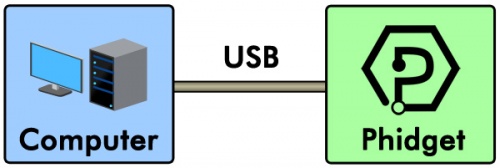
Some Phidgets are a complete, self-contained sensing package. One example is a 1042
, which measures motion:
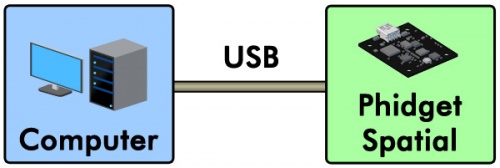
Or, a Phidget may be a 'building block' to use other sensors. One example is our 1048 which allows use of wire thermocouples:

Or, a Phidget may be a flexible I/O (input/output) board which can record and control analog sensors and digital inputs and outputs. One example is our 1018, with eight ports of each type:

Last but not least, a Phidget may be a VINT Hub, whose versatile ports can be used as inputs or outputs, and can also connect to smart VINT devices.
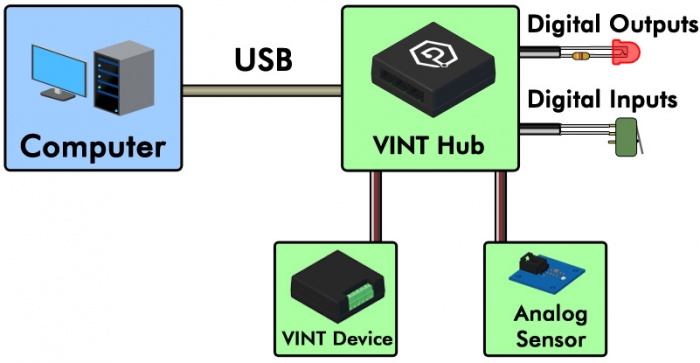
Data Flow
Data and control flows up and down the USB connection:
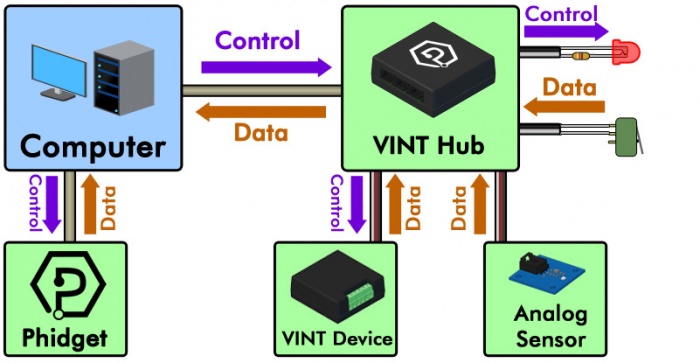
You can use more than one Phidget at a time in your program. You can also use multiple sensors, inputs, and outputs on our I/O boards. Combining these abilities lets you build extensive systems that can sense the environment and react to it.
Software Channels
Every Phidget has one or more channels. There are many channel classes, from the Accelerometer class to the VoltageInput class. Each channel class has its own functions, here is an example of some functions available to the VoltageInput channel class:

You can check your Phidgets' API for information about available channels. For example, the 1018 has five channels (with five distinct channel classes):
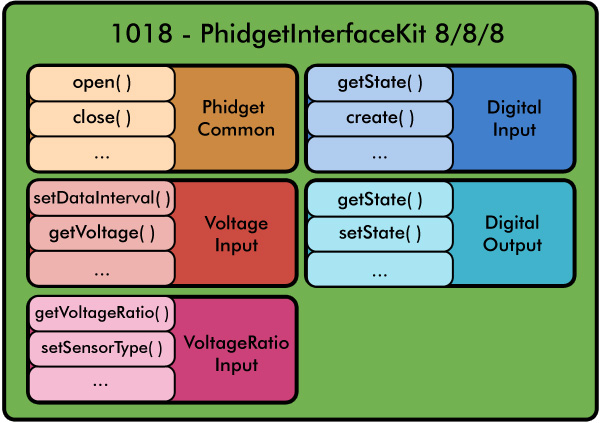
The Phidget class contains basic functions like open() and close() and is used by every Phidget. Other classes will also contain largely the same functions, properties, and events, although there may be minor differences which are explained in the API. For example, the DigitalOutput channel on the 1024 has the same functions available as the DigitalOutput channel on the 1018 (as shown in the image above):
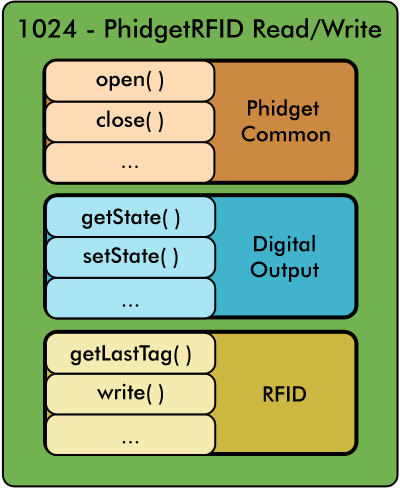
To help you understand the concepts above, we have included a simple C# program that could be used with the 1018.
using Phidget22;
int main() {
VoltageInput vin; // define a VoltageInput handle
vin = new VoltageInput(); //instantiate the class
vin.Channel = 0; //specify which channel
vin.Open(5000); //open the channel, waiting up to 5 seconds for attach
System.Console.WriteLine("My channel 0 sensor reads " + vin.Voltage); // Get the voltage value
vin.Close(); // close the channel
}
Programming
Using Phidgets means writing code. We provide support for many different programming languages:
| Core Languages | Mobile Languages | Other Languages |
Our software libraries can run on all major operating systems:
| Desktop OSes | Mobile/Wireless OSes |
Network Server
Not only can you control a Phidget locally, but we also provide a tool called the Phidget Network Server. The Network Server exports your Phidget's channels over your local network:
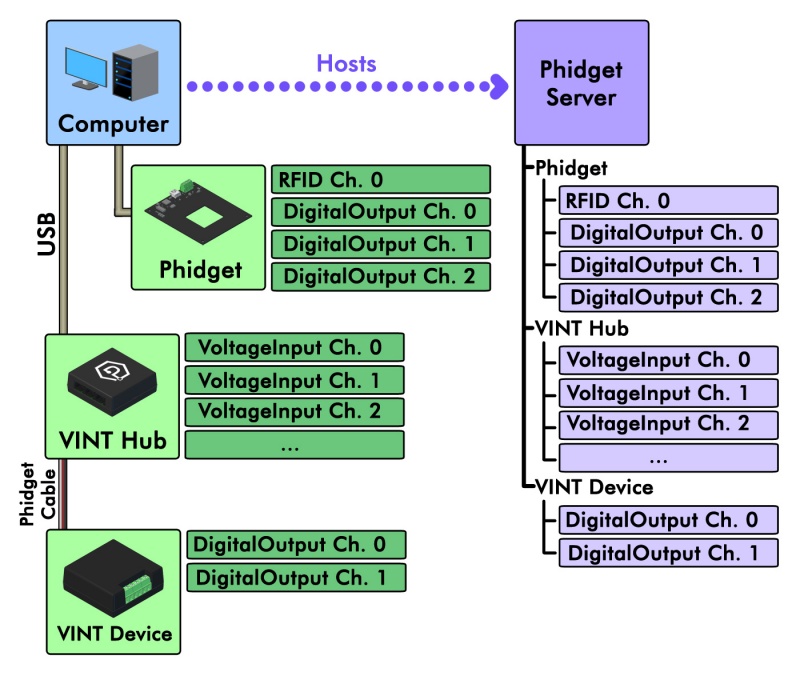
This allows other computers on your network to control the Phidget or read data from it. The network server isn't limited to desktop computers- it can also be used with phones or Single Board Computers that are running Phidgets code.
The Network Server also includes the Phidget Dictionary, which is a central place to store your data in key-value pairs.
Further Reading
With the combination of events, modular sensors, and network support, your system can range from simple to incredibly complex.
We encourage customers to not only build projects for themselves, but also to design and build real-world products using Phidgets. Our libraries can be distributed with your code to your customers.
And this can all occur with the same devices, and the same flexible software API.
Want to learn more? Check out our:
- Products on our main website
- Languages and Operating Systems
- Example Projects and Articles
- In-depth hardware information
Questions? Please contact us.
